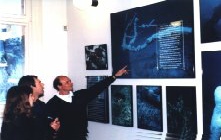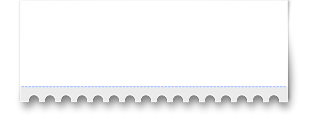

One of the unsolved mysteries of our time is the reason why the Blue Lake changes colour from a drab grey to a vivid blue each November to March.
Scientists and laymen have proposed many theories about this over the years.
One suggests the water picks up a blue dye as it works its way through the porous limestone base; another, that microscopic organisms come to the surface as temperatures rise.
The most likely theory is that light is scattered by calcium-
As the temperature rises at the surface level it causes them to precipitate out as extremely fine particles of a similar wavelength to blue light. This causes a scattering of light at the blue end of the spectrum, making the lake appear blue in much the same way as the sky appears blue by suspended particles in the atmosphere. Whatever the reason, it is a fascinating experience to observe the change, which happens over a few days in late November early December.
The lake is in an extinct volcano which last erupted around 5,000 years ago.
The crater is approximately 5km. around and the lake has a varying surface area of around 70 hectares. The water level is about 20 metres above sea level and 30 metres below the level of Mount Gambier's main street. It has a capacity of 36,000 megalitres (8,000 million gallons) and is South Australia's 3rd. largest water storage area.
Myths about it being bottomless have been disproved, and it has average depth of 77 metres and a maximum of 197 metres. It is replenished by underground aquifers which feed it through the porous limestone.
In 1882 work began on sinking a shaft to the edge of the Blue Lake and construction of a waterworks; steam, pumping station, and a reservoir between the Blue, and Leg of Mutton Lakes. Until then water had been drawn by hand and windlass from wells, caves and lakes.
The Pumping station was completed in Oct. 1884 and serviced 18km. (11 miles) of mains in Mount Gambier. Demand grew and in 1905 another reservoir was built next to the original one.
In 1955 the pumping station was converted to electricity and extra pumps provided a capacity of 490 litres per second. The present pumping station was opened in 1972 and capacity was doubled to 1,230 litres per second. The station has 3 pumps with provision for a 4th when necessary. It is open for public inspection and the tour will show you this and many more interesting items.
Information Centre

Mr.Garry Turner pointing to a calcified
tree found in the Blue Lake



Postal Address:
PO Box 2952
Mount Gambier
Site Address: Corner of Bay Road and John Watson Drive.
Mount Gambier, South Australia 5290
For bookings call: (08) 8723 1199
